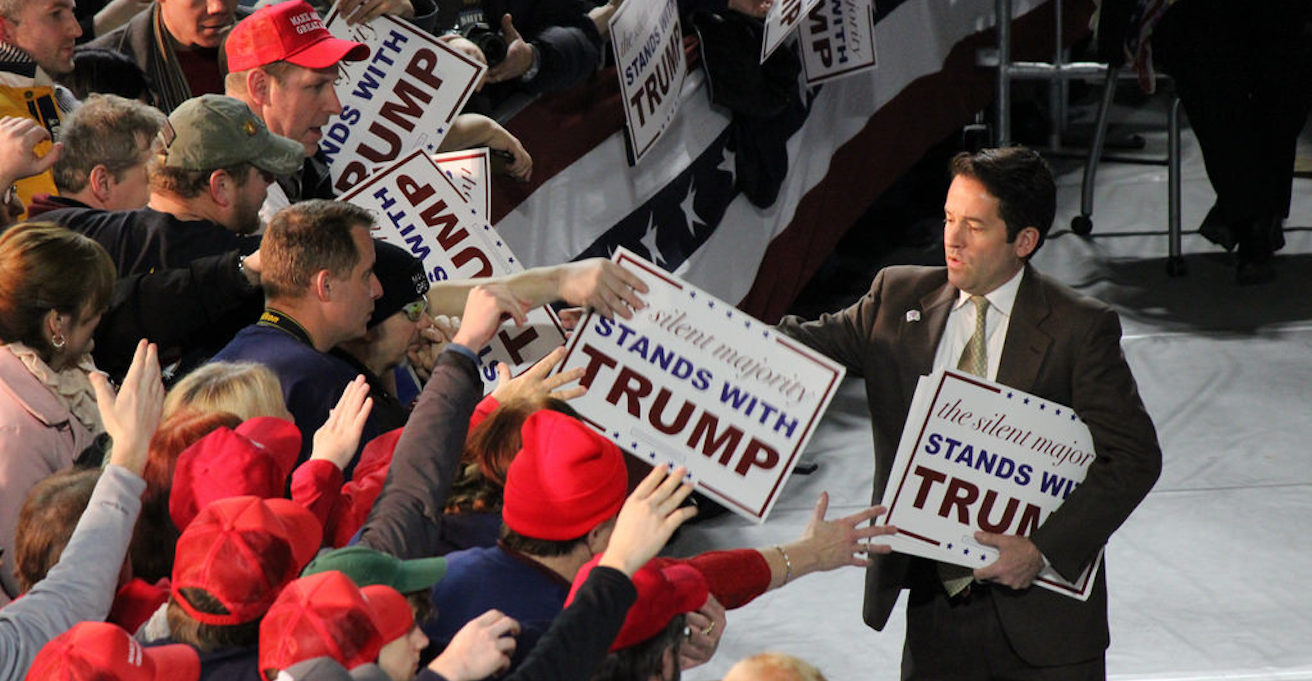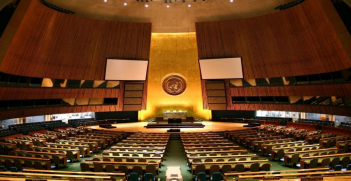US Relations with Asia Under Trump: Taking Stock

What are some conclusions we can make about President Trump’s approach to Asia and its implications for the region’s future?
First, while we can criticise Trump policy toward the region for being incoherent, contradictory and contrary to established norms and long-standing principles, that is in fact what is consistent about the policy.
In this sense, he is a revisionist. He made clear from the outset his intention to “put America first”, to withdraw from multilateral deals, to renegotiate bilateral trade agreements, to confront China economically and to compel allies to do more in their own defence. It is clear that Donald Trump thinks the world as currently organised is rigged against the United States, and he intends to change it.
This wrecking ball approach to the edifice of long-standing policy means much gets undone, but little gets “done done.” It is not clear what is to replace what is being undermined and dismantled. Where there are new concepts and bold ideas, the approach seems impulsive and blunt, with little in the way of follow-through or strategy for the longer-term.
Second, it appears as if Trump’s “America first” approach to the region has by and large been beneficial to China and, more recently, to North Korea. We will have to wait and see what happens on the US-China trade front, but at the moment it looks like a lose-lose proposition.
More broadly however, President Trump’s withdrawal from the Trans-Pacific Partnership, assaults on allies, protectionist preferences and apparent lack of interest in bolstering American regional networks in support of US-led liberal political and economic order have all provided openings for Beijing to expand its power and influence in Asia and beyond.
Thus far, the biggest winners coming out of the Trump-Kim dance have been China and North Korea. China’s preferred near-term diplomatic solution, the freeze-for-freeze proposal, is in place. “Maximum pressure” and “bloody noses” have also been taken off the table, perhaps indefinitely, while rifts are opening in alliance solidarity amongst the United States, South Korea and Japan, all much-sought outcomes for Beijing and Pyongyang.
Given the US president’s approach to Asia, we see allies seriously rethinking their futures and relations with the United States.
Many in allied capitals have come to realise that Trumpism is not just a passing phenomenon, but represents something more deeply embedded in the American body politic which will endure longer than most would publicly acknowledge. Buttressing this estimation is the underlying understanding that deep political divisions across society and persistent disgruntlement for the economically disenfranchised will not be resolved in the short-term. In this view, the principal threat to US global leadership and commitment is not China’s rise or the broader trends of multi-polarity and redistribution of global power, but rather America itself.
In Japan, serious concerns prior to the Trump-Kim Summit in Singapore worsened in its wake. Tokyo was taken aback by Trump’s unexpected announcement suspending US-South Korea military exercises, thereby stoking the worst fears in official Japan about the intentional erosion of American defence readiness and commitment in Northeast Asia, including Japan.
As a result, commentary out of Japan increasingly contemplates an entirely different future for Japanese security. Following the Trump-Kim summit, the foreign affairs adviser to Prime Minister Shinzo Abe, Katsuyuki Kawai, said “the alliance has changed from one based on shared values to a transactional alliance”, adding “this summit will serve as a trigger for the Japanese people to being to realise that it is risky to leave Japan’s destiny to another country.”
America’s South Korean ally had already been kept guessing about relations with the United States well before the Singapore summit. Trump’s on-again-off-again-on-again approach to the proposed summit with Kim, as well as the surprise suspension of US-South Korea joint military exercises, only further undermined Seoul’s confidence in American commitment to South Korea’s interests.
In the wake of these uncertainties, it is clear President Moon Jae-in intends to move quickly, with or without Washington, to secure a more stable relationship with Pyongyang with less near-term concern about North Korean nuclear weapons. As US efforts to “denuclearize” North Korea drag on with little to no success, the cleavages in US-South Korea relations will become more evident: President Trump and his team will call for a return to “maximum pressure” or even a “bloody nose”, policies which President Moon, China, Russia and North Korea will resist. Looking ahead, the South Korean leadership should be expected to take its strategic interests more and more in to its own hands with less reliance on America.
Even in Australia, the long-term picture for the alliance has become far more uncertain, even among long-standing supporters of the relationship. For example, last year, in the early months of the Trump presidency, Minster for Foreign Affairs Julie Bishop said, “if stability and prosperity are to continue, the United States must play an even greater role as the indispensable strategic power in the Indo-Pacific.”
However, at present, she said, “Many nations are in a strategic holding pattern and waiting to see whether the United States and its security allies and partners can continue to play the robust and constructive role that they have for many decades in preserving the peace.”
The more uncertain views about America’s role at the elite level are echoed in wider polling data across US allied countries. These widespread public views put pressure on politicians to distance themselves from the United States and make it more difficult for them to find compromise with Washington.
For example, global polling data released in early 2018 showed that the average global approval rating for American leadership across 134 countries suffered a 30 point drop, from 48 per cent the year prior to 18 per cent. That marked a record low for this long-time survey by the Gallup organisation, and placed support for US leadership at the same level as support for Chinese leadership and only slightly higher than approval for Russian leadership.
All of this analysis has not even begun to take in to account the ongoing investigation into Russian meddling in the US presidential election and what, if any, impact that may ultimately have on Trump’s term in office.
At some point, American interests and American strategic policy should converge again. Asia is a region of tremendous importance to the United States. As such, to ensure the nation’s prosperity and security, American leaders will need to be more deeply engaged in this most dynamic and transformative region and have a central role in shaping its future to the greatest degree possible in line with US interests.
To do so will require a comprehensive effort to leverage all aspects of American power and engagement, including economic, diplomatic and military tools. As Michael Green makes clear, this approach to the region is consistent with an abiding American strategic interest, dating back more than two centuries, to ensure that “the Pacific Ocean remains a conduit for American ideas and goods to flow westward, and not for threats to flow eastward toward the homeland.”
This strategic reasoning still stands. Long-term, proactive and effective American engagement in the Asia-Pacific is a fundamental imperative for the prosperity, security and regional leadership of the United States. But for that to happen, it appears we will need to wait for a new resident in the White House.
Bates Gill is professor of Asia-Pacific Security Studies at Macquarie University with 30 years of experience as a researcher, policy advisor, and institution leader on Asia, China and US-China relations. He is co-author, with Linda Jakobson, of ‘China Matters: Getting it Right for Australia’ and previously professor of Asia-Pacific strategic studies at the Strategic and Defence Studies Centre at the Australian National University.
This is an edited extract of a speech presentation by Dr Bates Gill to AIIA NSW on 17 July 2018.
This article is published under a Creative Commons Licence and may be republished with attribution.





